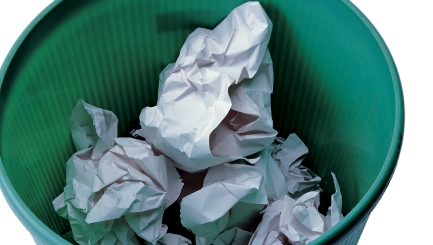Where Does All Your Recycled Waste Actually End Up?
 When Edinburgh moved to fortnightly bin collections last September, residents were encouraged towards better environmental wellness – facing a £50 spot fine for excess waste. However, according to Campbell Clark, a senior recycling advisor at Edinburgh City Council, residents still have questions over the process, with several straying into the bizarre.
When Edinburgh moved to fortnightly bin collections last September, residents were encouraged towards better environmental wellness – facing a £50 spot fine for excess waste. However, according to Campbell Clark, a senior recycling advisor at Edinburgh City Council, residents still have questions over the process, with several straying into the bizarre.
‘We have had people phone up and ask how they can recycle the dead mouse their cat has brought in or foxes that have died on the road,’ he said. ‘And people are frequently dropping things into recycling banks they wish they hadn’t like car keys, purses, engagement rings and we even had visa documents fall in there.’ Clark noted that the city has already notched up 37% of all household waste being reused, diverting 80,000 tonnes from the dump this year and potentially saving £8 million for the public through avoidance of landfill tax and disposal costs, but where does this recycled waste end up?
As an Edinburgh recycler, your food scraps are transported to a Scottish Water depot at Cumbernauld and turned into liquid fertiliser and compost and the useful biogas emitted during the process can be converted into energy. The shredders at Braehead slice and dice your cut-grass, tree branches and other vegetation into piles called windrows, which are allowed to compost before being sold to the public as soil improver.
Your old clothes take a journey further a field. Once they are sorted at I&G Cohen in Salford, textiles are transported to developing countries across the world. Unwanted clothing also goes to charities such as the National Blind Children’s Association, the World Cancer Research Fund and Christie Manchester Hospital. Around 70 tonnes of your reusable materials also get exported every year to Eastern Europe, Africa and Asia, while the rest are broken down into fibres or industrial wipes, some of which is processed into mattress stuffing.
Recycled newspapers return to shop shelves as a brand new version of their old selves, while some 4,720 tonnes of glass – separated into containers for clear, green and amber – are transported to West Yorkshire per annum and will reappear in the supermarket as bottles and jars. Finally, G&P Batteries in the West Midlands use the extracted components of household batteries in the steel industry or in other industrial applications.


Comments are closed.